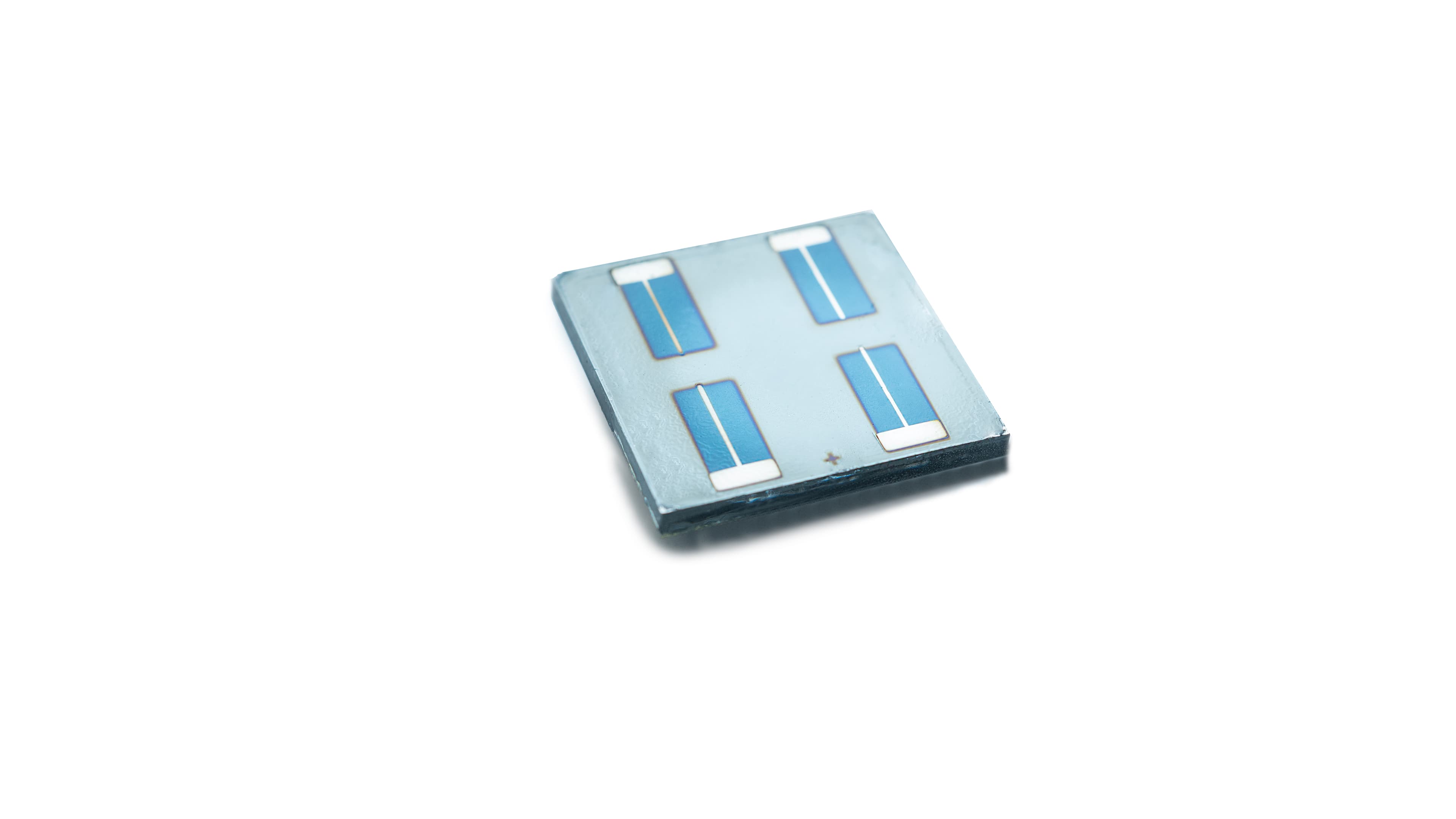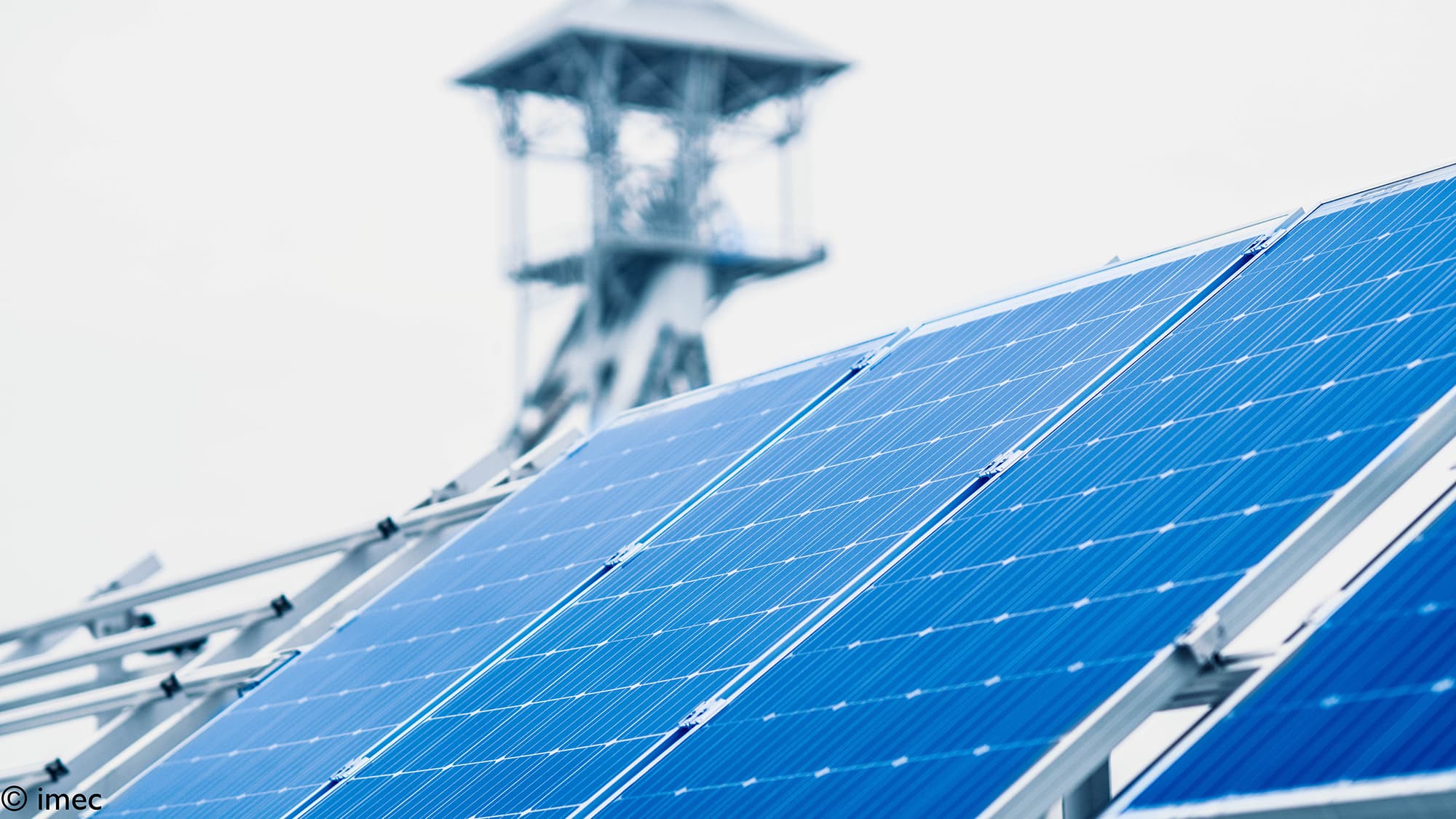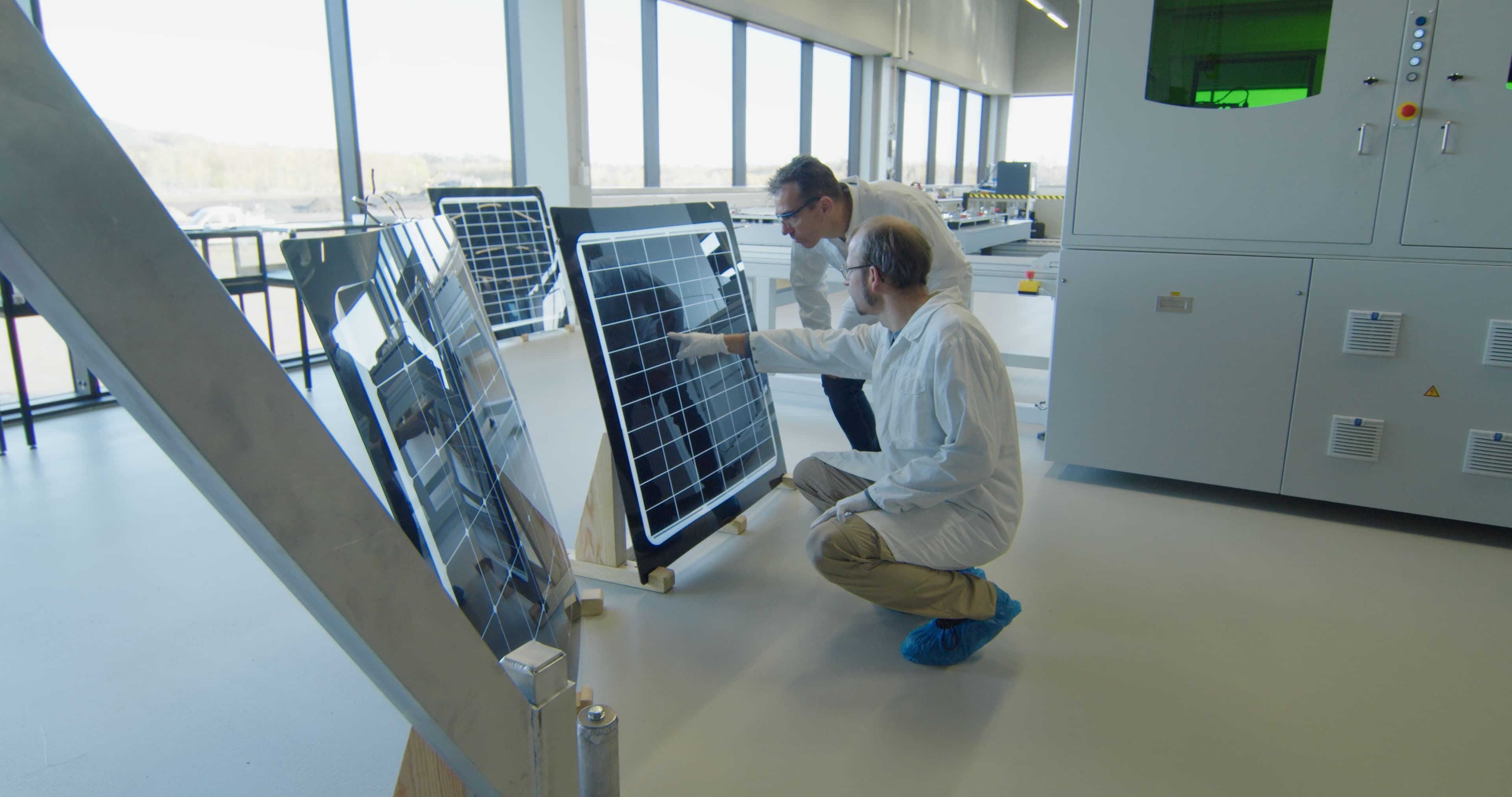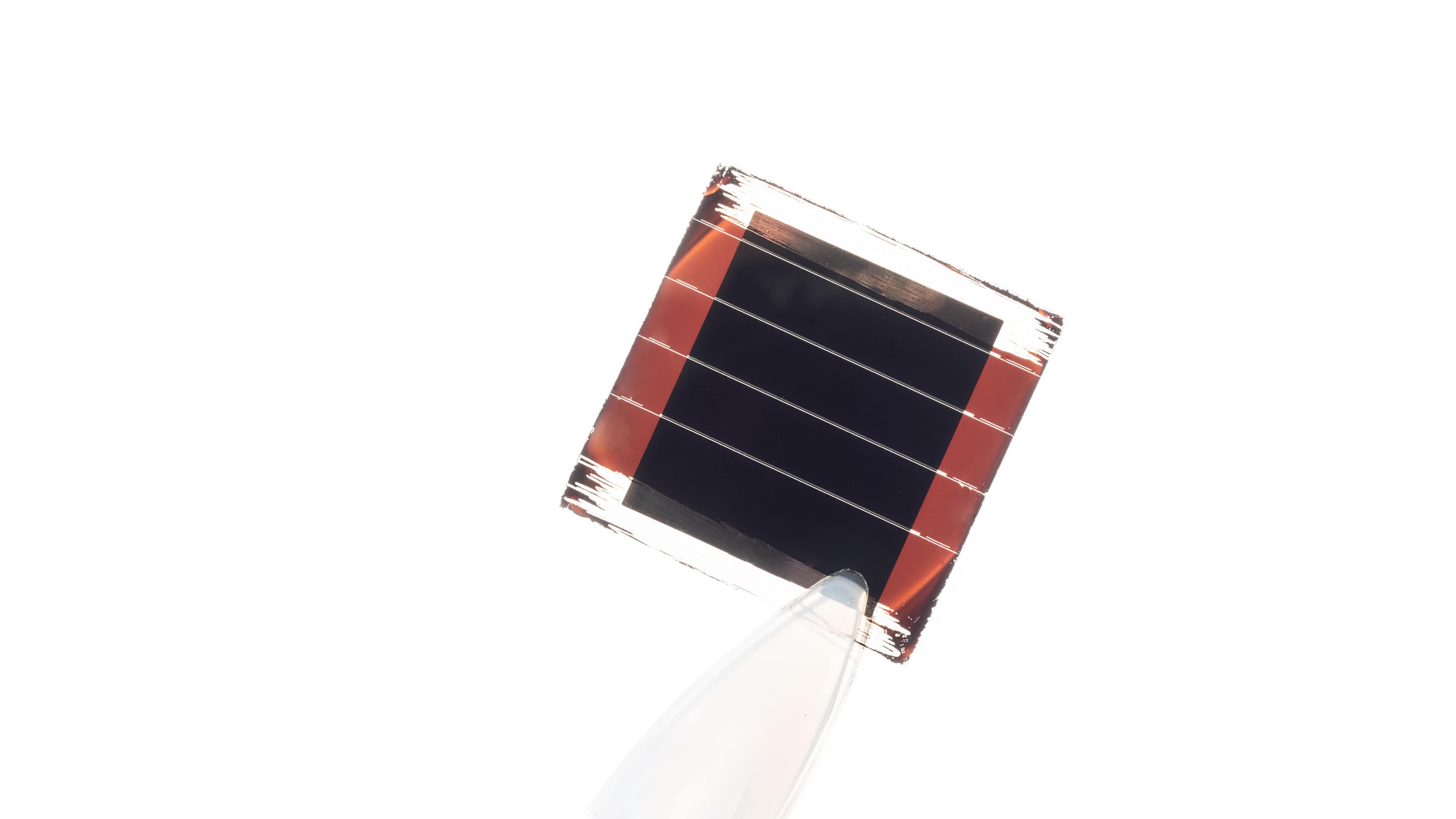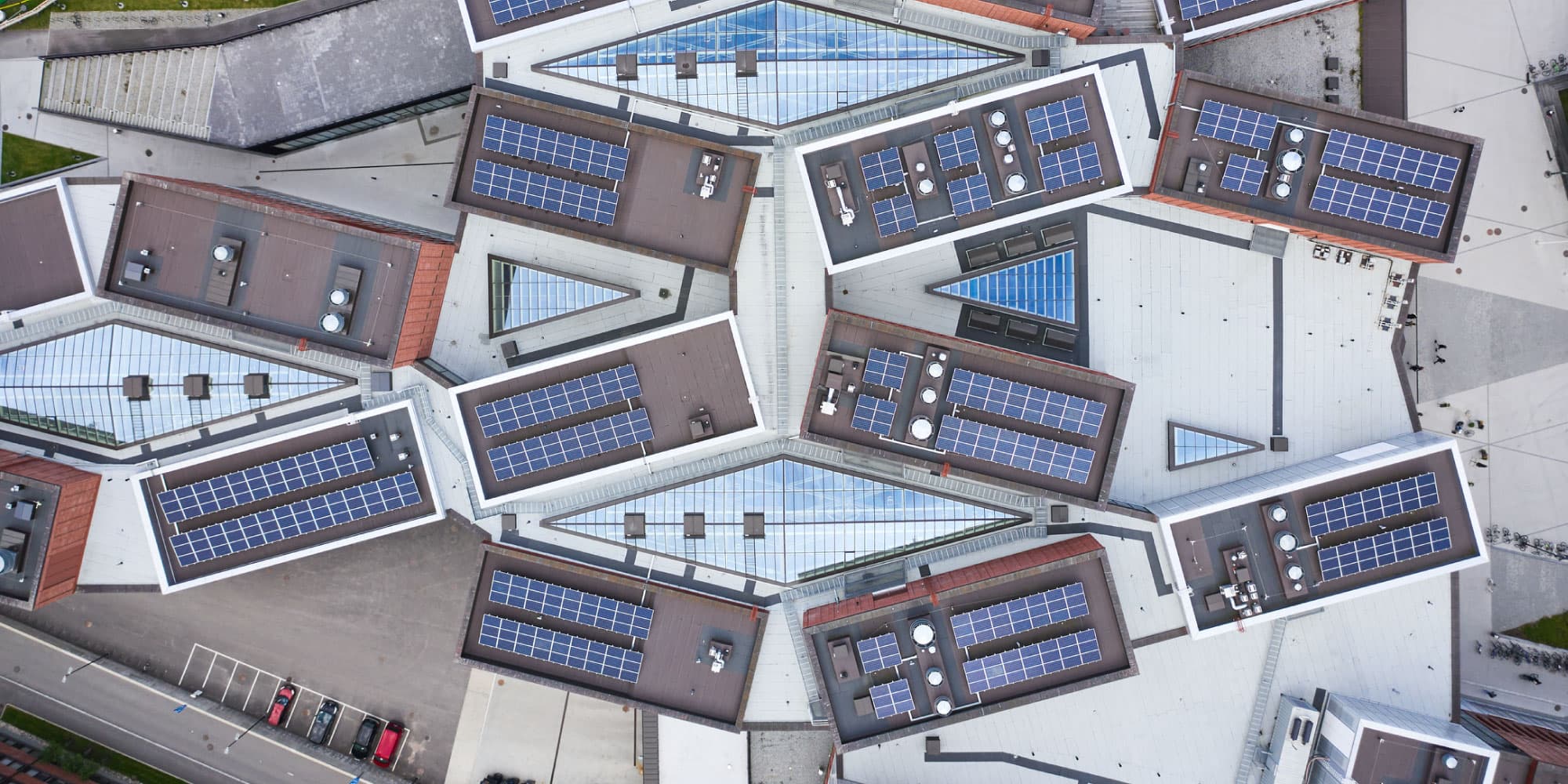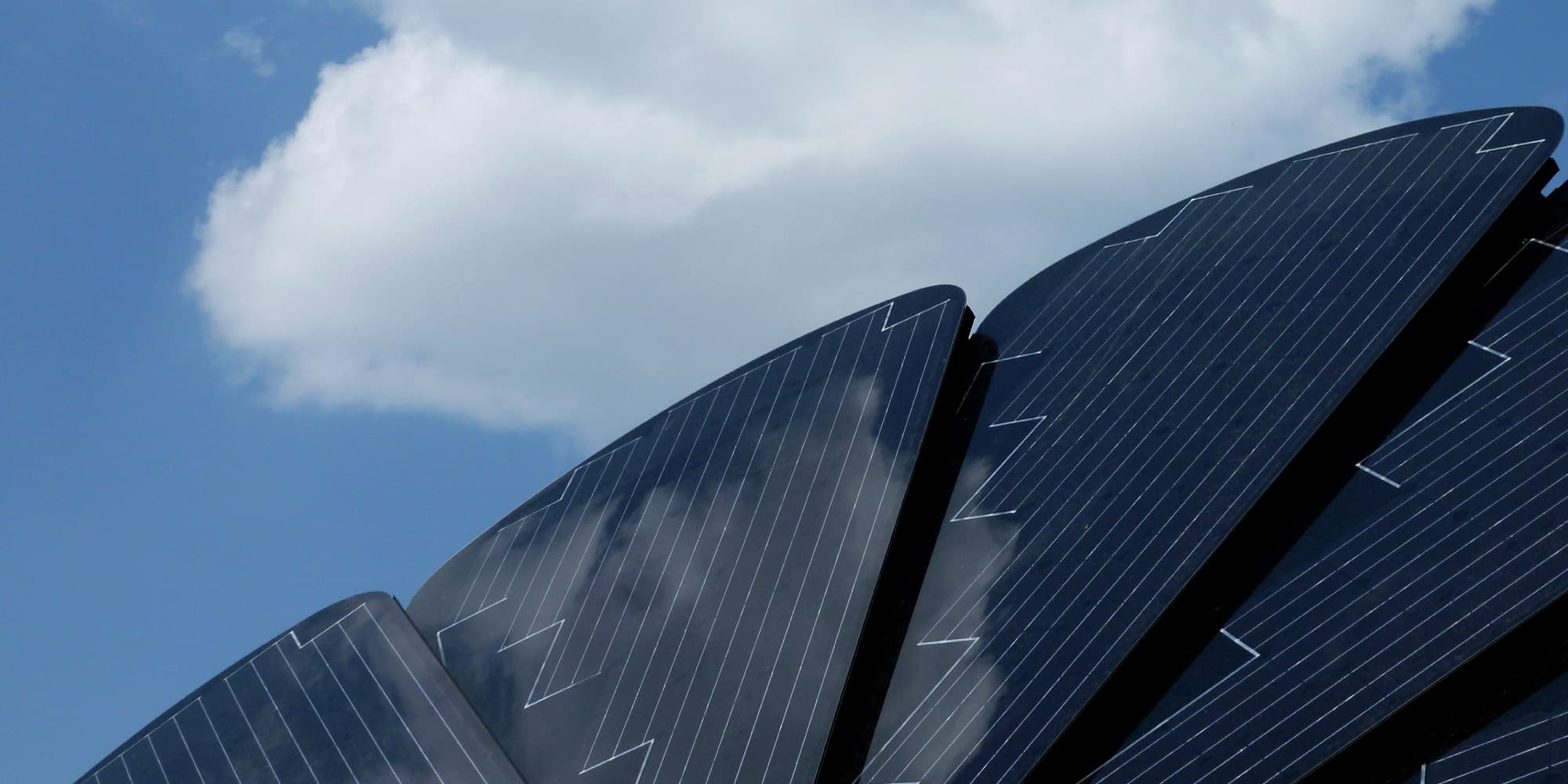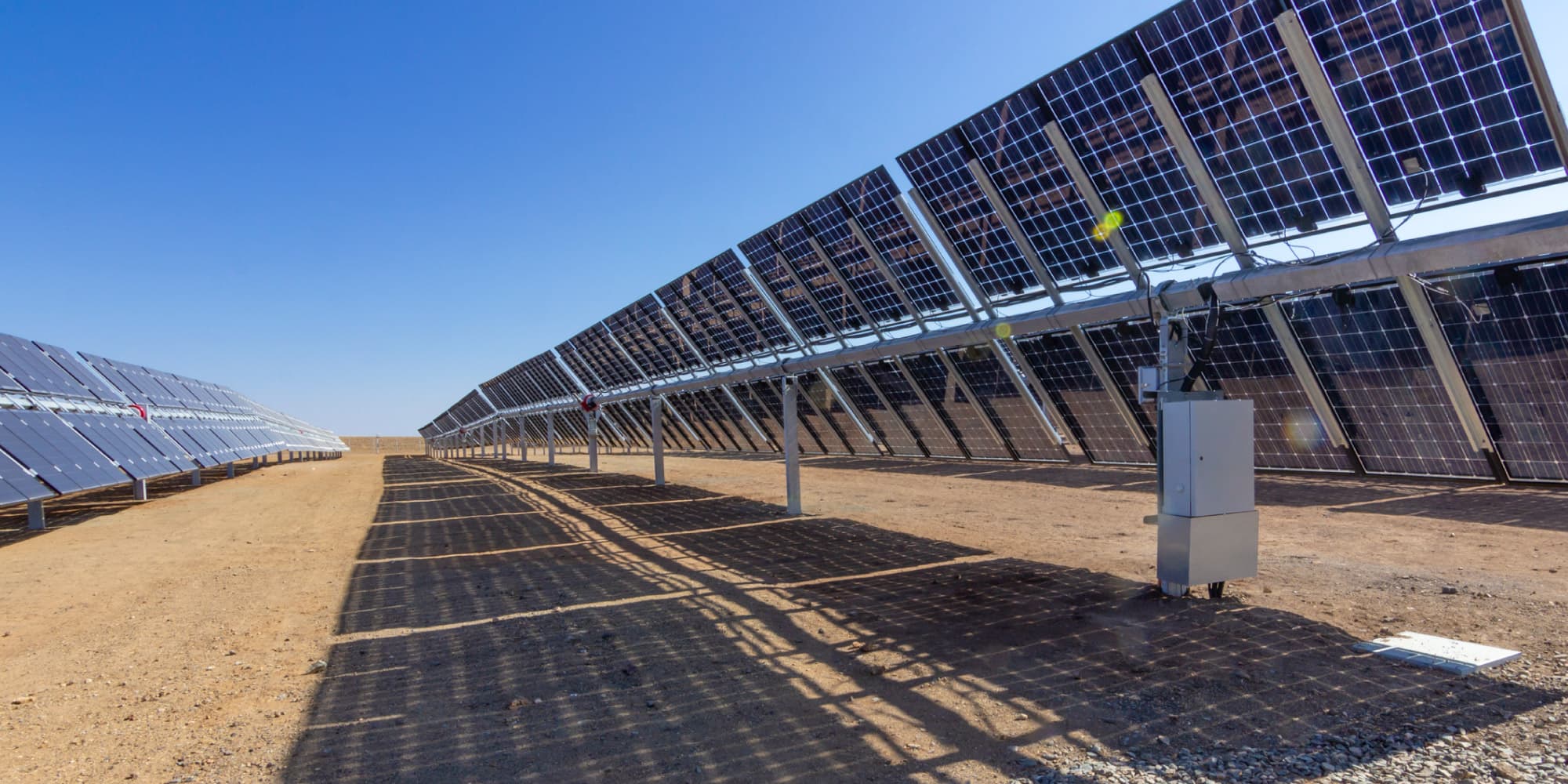Best of 2016 / Edition September 2016
Perovskite microcrystals are a promising material to make high-yielding thin-film solar cells. They can be processed into thin, light, semitransparent modules that could eventually be integrated in building materials such as windows or curved construction elements. But they may also be used to boost standard silicon solar technology. Up to now, perovskite PV was a lab technology, but in collaboration with their colleagues from Solliance, researchers of imec are working to upscale processing to fabricate modules and eventually to arrive at an industrial process.
Perovskite materials have been known for a long time. Their first use in solar cells, however, dates only from 2009, when they were integrated using a dye-sensitized solar cell architecture, generating a very modest 3.8% conversion efficiency. Moreover, these cells were only stable for a few minutes before they degraded. Since then, labs around the world have steadily improved the efficiency, now reaching values of around 20%, with the expectation of doing even better.
Apart from their efficiency, perovskite solar cells have many other desirable properties. They are potentially cheap to produce: they can be made with simple fabrication techniques such as coating and printing with ink-like materials on flexible or glass substrates. And they have a high absorption efficiency for sunlight, so not much of the material is needed, a layer of at most a few hundred nanometers. Moreover, the material can be carefully engineered to result in various optical and electronic properties, which allows e.g. adjusting the color and transparency of the cell.
But before you run off to your local PV dealer to order perovskite-enhanced windows, you should know that there are still a few issues to solve before perovskite-PV is ready for widespread adoption.
One is that the cells’ stability has not kept suit with the improving efficiency. Perovskite cells still degrade too quickly, lasting only weeks or months instead of years or decades. And a second issue is that all efficiency records were made on small-sized cells, sometimes measuring a mere square centimeter. The challenge is now to translate the excellent efficiencies to large cells, modules and eventually PV systems.
In collaboration with a number of industrial partners, our R&D experts are working on both tracks. But in contrast with more science-oriented initiatives, our effort is focused on developing industrially-suitable processes. These should help bring first perovskite-based solar cells on the market in two years’ time.
Going for stability
As is the case with all solar cells, perovskite cells are made up of a carefully engineered stack of functional layers, with a central photoactive layer made from microcrystals of perovskites, a family of materials that form microcrystals with the structure ABX3. Solar cells typically use an organometal-halide perovskite. In these, material A is an organic cation, material B is a metal ion such as lead and X is a halide anion such as iodide, bromide or chloride. With these three elements, many variations may be engineered, each with their specific characteristics. There is, however, no direct pointer to the best suited material; part of the R&D consists of painstakingly screening compounds and their behavior.
One of the challenges is to make the perovskite layer stable under higher temperatures. Currently, only operating temperatures up to 80°C will leave the material stable. Together with a university group specialized in engineering materials (IMOMEC at Hasselt University), we’re developing new perovskite compounds that should remain stable up to 150°C. In parallel, we’re also refining the processing techniques to optimize the microcrystalline structure of the active layer.
A second issue concerns the hole conducting layer, the layer that guides the holes to the contacts after being separated from the electrons in the perovskite active layer. For perovskite solar cells, typically a so-called Spiro layer is used, a layer that was developed for dye-sensitized solar cells. But being organic, this material degrades rather fast. So also here, alternatives are needed.
In addition, the best perovskite materials we have today are still very sensitive to moisture, greatly limiting their outdoor use. One way to overcome this is to finish the PV stack with a really good moisture barrier, for example by sandwiching it between two glass plates.
Unrelated to stability, but also essential is the toxicity of the material. The perovskites we use today include lead. And although the concentration in final PV systems will be very low, it is vital to find a lead-free material with good stability to produce a sustainable PV technology and consumer products that adhere to the WEEE and RoHS regulations.
On all these issues, we’re slowly progressing, carefully tuning the recipes and processing steps. And as with the efficiency, also the stability of the technology will progress, reaching a lifetime of years instead of weeks.
Going for modules
It is essential if we ever want to get this technology out of the lab and into the light, to develop processes that can be scaled industrially. This means processing large-area cells, integrating these into modules and eventually also in full-fledged PV-systems.
Recently, in May 2016, our team presented a first-ever semi-transparent perovskite PV-module. These were made with scalable coating techniques and showed efficiencies of 12% on sizes as large as 4cm² and 10% on sizes as large as 16cm², a world-best. Comparable modules may be realized on flexible (plastic films or metal foils) as well as rigid (glass, metal) carriers. In addition, the color and transparency of the modules may be tuned by varying the optical and electrical properties of the cells. This can be done by carefully mixing in the right materials.
An alternative to making stand-alone thin-film modules is to add the perovskite-stack as a layer on top of standard silicon solar cells. Perovskites can be engineered to absorb a spectral range that is complementary to the optimal range of silicon cells. In addition, they have a sharp absorption cutoff, so there is very little parasitic absorption that would decrease the efficiency of the silicon cell. With this technique, we managed to stack a transparent perovskite module on top of interdigitated back contacted (IBC) silicon solar cells with the same size. In this setup, the perovskite top module passed 70 percent of the incoming light to the silicon cell. This way, we measured a conversion efficiency of 20.2 percent for a 4 cm² stack and 17.2 percent for a 16cm² stack, a record result for this size.
A perovskite-powered environment
Perovskite solar technology is definitely a solid contender to be included in the PV technology mix that will power our future world. Either as booster materials for silicon cells, or as an inexpensive technology to power up large surfaces in e.g. buildings or cars. The following years will tell if we can engineer the right mix of efficiency, stability, and scale that can lead to large-scale application of this fascinating, very versatile material.
Imec started its R&D on perovskite solar cells in 2014, with an emphasis on developing a scalable, stable and lead-free technology. This research is embedded in Solliance, a transnational partnership between expert companies and research institutes collaborating on thin-film solar technology. Imec’s PV research is part of EnergyVille, the Flemish expertise centre for energy technology.
Published on:
19 September 2016



